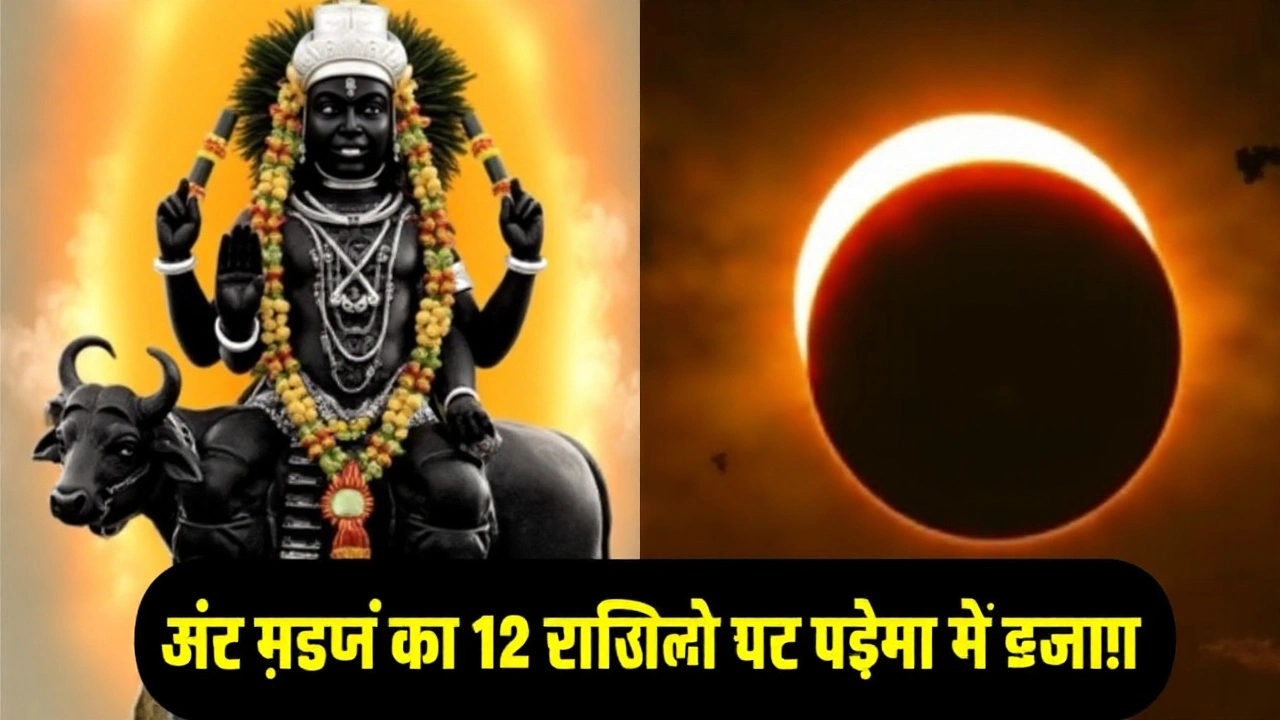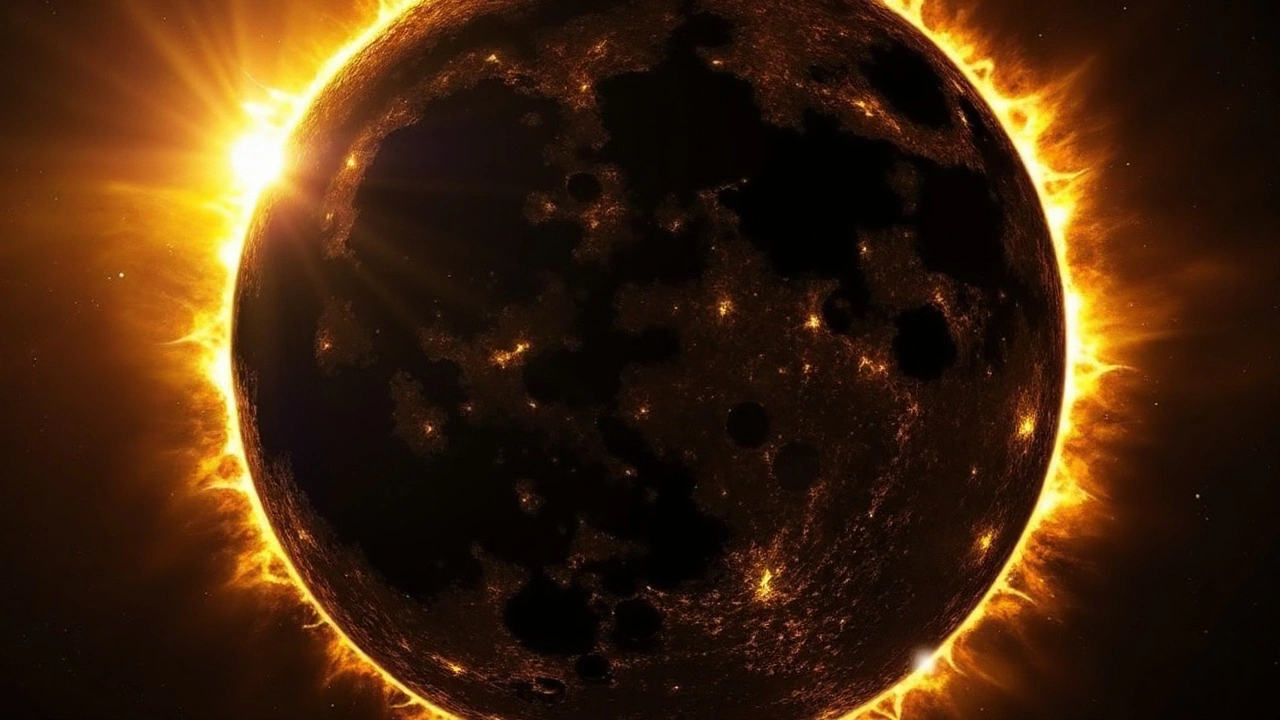Solar Eclipse 2025: Dates, times, and where each eclipse will be visible

Sep, 7 2025
Key dates, times, and where to watch
Circle two dates on your 2025 calendar. The world will get a pair of partial solar eclipses—March 29 and September 21—each favoring different hemispheres. Both will be worth your time, but if you’re in India, you won’t see either from the ground. That also means no local Sutak Kaal observance for these events. If you’re in North America, Europe, or the South Pacific, you’re in luck.
The first event, on March 29, 2025, plays out over the North Atlantic and surrounding landmasses. Because the United States and Canada are on daylight saving time by late March, the correct reference is Eastern Daylight Time (EDT), not EST. The partial phases unfold in the morning across northeastern North America and around midday in much of Europe and North Africa.
Here’s the broad timing for March 29:
- Start of partial eclipse: 4:50 AM EDT (08:50 UTC) / 2:20 PM IST
- Maximum phase: 6:47 AM EDT (10:47 UTC) / 4:17 PM IST
- End of partial eclipse: 8:43 AM EDT (12:43 UTC) / 6:14 PM IST
Who gets a view on March 29? Expect visibility across northeastern Canada, much of the northeastern United States (including New York City and Boston), large portions of Europe with varying coverage, northern Africa, and parts of Asia and South America on the fringes. North American observers on the Atlantic side will likely have some of the clearest, most convenient morning views, weather permitting. Over in Europe, the show lands closer to lunchtime, which can help both casual skywatchers and school groups build viewing plans.
India is out of range for this one. The Moon’s shadow doesn’t pass over the subcontinent at any point, and that’s the deciding factor for local visibility. If you’re traveling, think coastal New England, Atlantic Canada, the UK, France, Spain, Portugal, northern Italy, Germany, or Scandinavia for daylight viewing windows. Exact coverage will vary by city, but the nature of a partial eclipse is the same: the Moon bites into the Sun, peaks, and then retreats.
The second solar eclipse arrives on September 21, 2025, and it belongs to the Southern Hemisphere. The partial phases run late at night in India and during the pre-dawn to morning hours across Australia and New Zealand. Timings in Indian Standard Time (IST) stretch from late evening into the next day, even though the event won’t be visible from India.
Key timing for September 21–22:
- Start of partial eclipse: 11:00 PM IST (17:30 UTC on Sep 21)
- End of partial eclipse: 3:23 AM IST (21:53 UTC on Sep 21)
Where to look for this September event? Southern Australia, Tasmania, New Zealand, Fiji, and parts of Antarctica are in play. For rough local feel: eastern Australia sees activity from about 3:30 AM to around 7:50 AM on September 22 (AEST), carrying many locations from nautical twilight into morning. New Zealand runs a little later into its morning. Again, India sits outside the footprint and won’t see it.
One more twist: September 2025 is a busy month for the sky. A lunar eclipse lands on September 7, followed by the September 21 solar eclipse two weeks later. For many in South Asia, that back-to-back rhythm overlaps with Pitru Paksha, the period dedicated to honoring ancestors. Astronomically, that pairing is normal—lunar and solar eclipses often arrive in a two-week sequence—though having Pitru Paksha begin and end with eclipses is rare enough to catch attention.

Why these eclipses matter: science, culture, and safety
Start with the science. Both 2025 events are partial solar eclipses. That means the Moon, Sun, and Earth don’t line up perfectly enough to produce a total blackout or a ring of fire (annular). Instead, the Moon covers only a portion of the Sun’s disk from any given location inside the visibility zone. The farther you are from the center of the Moon’s shadow footprint, the smaller the “bite” taken from the Sun.
These footprints are a geometry lesson in motion. The Moon’s shadow is narrow and moves fast across a curved, rotating Earth. Shift the alignment by a few hundred kilometers and an entire country drops out of view. That’s why the March eclipse treats New York and Boston to a morning show but leaves Delhi, Mumbai, and Bengaluru with a no-go forecast. The September eclipse flips the script, favoring the South Pacific while leaving Asia largely in the dark—figuratively speaking.
If you’re wondering why times differ so much by region, it’s not just time zones. Eclipses run on Universal Time (UTC), and the local clock translation depends on daylight saving rules, which shift seasonally. In March, the Americas and Europe are in different daylight saving modes; by September, the Southern Hemisphere and Northern Hemisphere often swap who’s dealing with clock changes.
How will the sky look? During a partial eclipse, you’ll notice daylight dimming slightly at higher coverage levels, shadows sharpening, and the Sun appearing like a cookie with a bite missing when viewed through proper solar filters. Wildlife sometimes behaves oddly near peak coverage—birds quiet down, and temperatures can dip a touch—though that’s more pronounced during deep partials and totals.
Now to the cultural layer. In India and several other countries, eclipses carry religious and astrological weight. For September’s solar eclipse, many astrologers point to Virgo (Kanya Rashi) and the Uttara Phalguni Nakshatra, with the Sun, Moon, and Mercury clustered in Virgo. Saturn sits opposite in Pisces, with Mars in Libra; Rahu, Jupiter, Venus, and Ketu occupy their own signs. Within that framework, some predict mixed outcomes depending on zodiac sign.
Here’s the practical takeaway for daily life in India: traditional Sutak Kaal—ritual restrictions before an eclipse—is typically observed only when the eclipse is visible locally. Because neither March 29 nor September 21 will be seen from India, many households, temples, and schools will not apply Sutak rules for these events. Practices vary by community, but local visibility is the common trigger.
Pitru Paksha also comes into play in September. For many families, it’s a time to honor ancestors through offerings and prayers. This year, the period is bookended by a lunar eclipse (Sep 7) and a solar eclipse (Sep 21), which some view as a potent combination. Whether you approach that symbolically or spiritually, it’s a notable calendar coincidence that bridges science and tradition.
Planning to watch? Even a partial eclipse demands careful preparation. The Sun is still extremely bright, and looking at it without proper protection can damage your eyes in seconds. Regular sunglasses are not safe. Use eclipse glasses that meet the ISO 12312-2 standard, or view through a certified solar filter attached to binoculars or a telescope. Pinhole projectors and solar projection through a telescope (with safe setups) are budget-friendly alternatives that let groups view together.
- Use certified solar viewers or filters. No exceptions.
- Check your gear for scratches or damage before the event.
- Never look through a camera, binoculars, or telescope without a proper solar filter—eclipse glasses alone are not enough when optics are involved.
- Practice your setup a day early so you’re not fumbling at first contact.
- Mind the weather: coastal fog and low clouds can spoil a morning show; have a backup spot inland if possible.
If you’re in the northeastern United States or Atlantic Canada for March 29, aim for clear eastern horizons. The partial phases start early, and low solar altitude means haze can be a factor. Urban observers in New York and Boston can still have a great view from rooftops, parks, or waterfronts—any place with an unobstructed sky. In Europe, lunch-hour observers may find it easier to organize school viewing sessions or public gatherings in plazas and museum courtyards.
For September 21–22 in Australia and New Zealand, alarm clocks are part of the deal. Coastal cities like Sydney, Melbourne, Hobart, and Auckland will see phases evolve from the pre-dawn hours into the morning. Photographers may get creative with silhouettes—bridges, skyline outlines, or headlands make striking foregrounds when the Sun is low and the Moon’s bite is obvious.
Can’t travel? The safest plan is a local gathering in your visibility zone, whether it’s a schoolyard, a planetarium lawn, or a community park. If you’re a teacher, a partial eclipse is ideal for hands-on demos: a cardboard box pinhole projector is cheap, fast, and fun. Students can watch the Sun’s crescent projection sharpen as the eclipse deepens, then round back out as the Moon moves on.
There’s a reason people keep a running list of eclipse dates. They’re predictable yet rare for any given location. The big total eclipse across North America in April 2024 set a high bar; 2025 won’t bring a total or annular spectacle, but two partials that reach different halves of the globe still make for an excellent year. If skywatching is on your 2025 goals list, the solar eclipse 2025 duo is an easy win: widely visible, logistically friendly, and memorable.